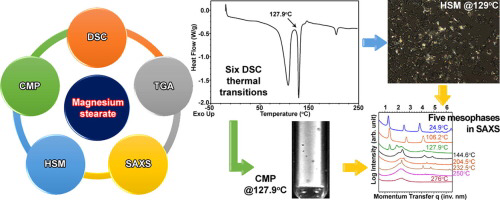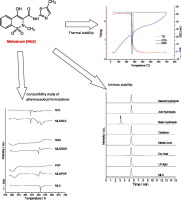- Home
- Blog
- News
- Basics
- Sources
- Agencies, Regulatory & Organisations
- CERSI Excipients Browser
- Excipient Report
- Excipient DMF List
- EXCiPACT Certified Companies
- Excipient Documentation
- Excipient EINECS Numbers
- Excipient E-Numbers
- FDA Inactive Ingredient List
- FDA GRAS Substances (SCOGS) Database
- IPEC Americas
- USP - U.S. Pharmacopeia
- Definitions
- Whitepapers / Publications
- Supplier
- Services
- Media
- Events
- 1st pharmaexcipients Poster Award
- Event Calendar
- Events featured by pharma-excipients
- 4th Annual Formulation & Drug Delivery Congress
- DDF Summit
- ExcipientFest Americas
- ExcipientFest Asia
- Global CompliancePanel
- International Conference and Exhibition on Pharmaceutics & Novel Drug Delivery Systems
- Formulation & Drug Delivery USA Congress
- Laboratory Medicine 2018
- Making Pharmaceuticals Europe
- Making Pharmaceuticals Exhibition
- Pharma Integrates
- PharmaExcipients China @CPhI China
- TTC Technology Training Center
- Jobs
- Online Sourcing
- Contact
15. September 2018
The present study explores the hypothesis that a polymer can affect the thermal stability of a drug in solid polymer-drug dispersions. The hypothesis is tested in a systematic fashion by combining isoconversional kinetic analysis with thermogravimetric measurements on several solid dispersions. Experimental systems involve three drugs: indomethacin (IMC), felodipine (FD), and nifedipine (ND) and their solid dispersions with polyvinylpyrrolidone (PVP). It is found that PVP stabilizes IMC but...
08. July 2018
Magnesium stearate (MgSt) is the most commonly used excipient for oral solid dosage forms, yet there is significant commercial physicochemical variability that can lead to variable performance of critical product attributes. Differential scanning calorimetry (DSC) is often used as a quality control tool to characterize MgSt, but little data is available regarding the physicochemical relevance for the DSC thermograms. The main aim of this study was to decipher MgSt’s complex thermotropic...
29. November 2017
Meloxicam (MLX) is a non-steroidal anti-inflammatory cyclooxygenase (COX) inhibitor that is used to relieve inflammation and pain. MLX has a preferential affinity for COX-2, which is associated with a lower incidence of gastrointestinal side effects. The drug belongs to Class II of the Biopharmaceutical Classification System (BCS) in which dissolution is the limiting step of its bioavailability. In view of this classification, carrying out further studies regarding the compatibility of MLX with...
07. October 2017
Burst drug release is often considered a negative phenomenon resulting in unexpected toxicity or tissue irritation. Optimal release of a highly soluble active pharmaceutical ingredient (API) from hypromellose (HPMC) matrices is technologically impossible; therefore, a combination of polymers is required for burst effect reduction. Promising variant could be seen in combination of HPMC and insoluble Eudragits® as water dispersions. These can be applied only on API/insoluble filler mixture as...
11. April 2017
Abstract Ribavirin (C8H12N4O5; anti-viral agent) was crystallized as two unique, phase-pure polymorphs (R-I and R-II). Calorimetrically determined isobaric heat capacities and heat of transition data were utilized to determine the solid-state transition temperature (Ttr), confirming enantiotropism, while R-I was determined to be kinetically stable at ambient temperature. Unprocessed samples of the low Tm polymorph, R-II, did not convert into R-I when held isothermally well above Ttr for 7 days....
26. March 2017
Abstract A quantitative structure-property relationship (QSPR) between protein stability and the physicochemical properties of excipients was investigated to enable a more rational choice of stabilizing excipients than prior knowledge. The thermal transition temperature and aggregation time were determined for lysozyme in combination with 13 different amino acids using high throughput fluorescence spectroscopy and kinetic static light scattering measurements. On the theoretical side, around 200...
28. January 2017
Abstract The objective of this work was to access thymol-excipient compatibility using an alternative protocol of mixture design subsidizing the development of nanostructures lipid carriers containing this drug. Simultaneous DTA-TG analyses associated with infrared spectroscopy were performed according to simplex centroid mixture designs with three components. Two designs were used: the design A containing stearic acid (SA), soybean lecithin (LC), and sodium taurodeoxycholate (TAU) and the...
08. November 2016
This study assesses the solid-solid interactions between the commercial form of Ketoprofen (KET), a non- steroidal anti-inflammatory drug of the propionic acid class, and several widely used pharmaceutical excipients. The work was carried out on drug-excipient mixtures, in 1:1 (w:w) ratio, blended in an agate mortar at room temperature. The compatibility/incompatibility of KET with the proposed excipients was highlighted by the most commonly used analytic methods: differential scanning...
01. May 2016
We have produced a thermally stable recombinant human type 5 adenoviral vector (AdHu5) through spray drying with three excipient formulations (l-leucine, lactose/trehalose and mannitol/dextran). Spray drying leads to immobilization of the viral vector which is believed to prevent viral protein unfolding, aggregation and inactivation. The spray dried powders were characterized by scanning electron microscopy, differential scanning calorimetry, Karl Fischer titrations, and X-ray diffraction to...
16. February 2016
Polyvinyl alcohol has received little attention as a matrix polymer in amorphous solid dispersions (ASDs) due to its thermal and rheological limitations in extrusion processing and limited organic solubility in spray drying applications. Additionally, in extrusion processing, the high temperatures required to process often exclude thermally labile APIs. The purpose of this study was to evaluate the feasibility of processing polyvinyl alcohol amorphous solid dispersions utilizing the model...



